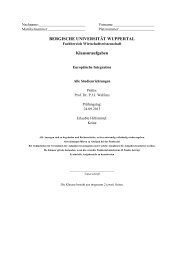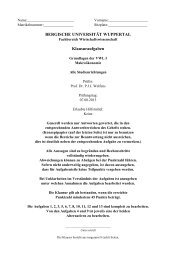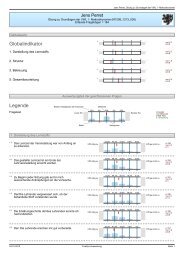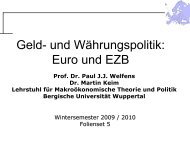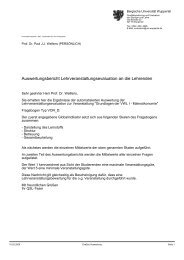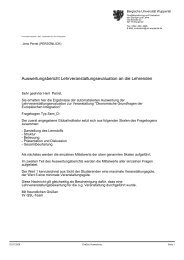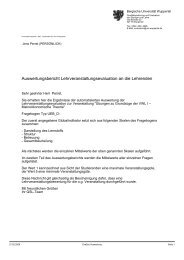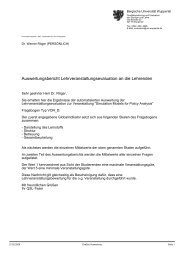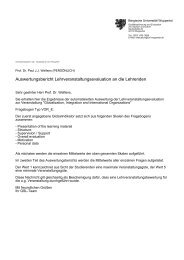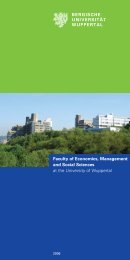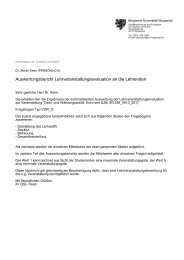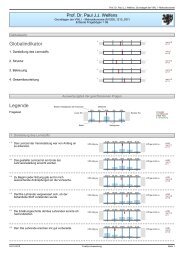UNIVERSITÄT POTSDAM - Prof. Dr. Paul JJ Welfens
UNIVERSITÄT POTSDAM - Prof. Dr. Paul JJ Welfens
UNIVERSITÄT POTSDAM - Prof. Dr. Paul JJ Welfens
You also want an ePaper? Increase the reach of your titles
YUMPU automatically turns print PDFs into web optimized ePapers that Google loves.
economy can be built. Facing EU eastern enlargement, one may anticipate that many<br />
plants in capital-intensive sectors, e.g. automotive or steel, will be relocated to Eastern<br />
Europe. Hence it will be all the more important that high wage EU countries generate<br />
sufficient increases in R&D capital, human capital, and ICT capital.<br />
If the expenditures on R&D and software were to systematically increase in<br />
OECD countries in the early 21 st century this would mean that the share of sunk costs<br />
in most products would increase. From a theoretical point of view this reduces price<br />
flexibility in the sense that innovative products are typically less exposed to price competition<br />
than standardized goods. However, high sunk costs imply that incumbent firms<br />
have considerable room to maneuver with respect to temporary price cutting when a<br />
newcomer wants to enter the market. They could disregard all sunk costs to fend off the<br />
intrusion of newcomers. If newcomers were to try to enter new markets particularly in<br />
phases of an economic upswing, this could imply that price increases in the economic<br />
upswing will be less pronounced in the future.<br />
2.2 Perspectives on Inflation and Growth<br />
US inflation rates were low throughout the 1990s. This is surprising given the considerable<br />
boom in the second half of the 1990s. High economic growth could in itself be<br />
an explanation of low inflation to the extent that high growth rates were anticipated in<br />
stock markets – we will show a formal model below. Moreover, the strong appreciation<br />
of the dollar – in the late 1990s especially vis-à-vis Asian countries – has helped to<br />
maintain low inflation rates; this holds at least until 1999/2000 when international oil<br />
and gas prices increased strongly. While the previous period of a strong dollar in the<br />
mid-1980s was accompanied by a high current account deficit and a high budget deficit,<br />
the strong dollar of the late 1990s developed only in combination with a high current<br />
account deficit. This current account deficit is not necessarily pointing to competitiveness<br />
problems of US industry; rather it seems to be the mirror of high capital inflows<br />
in a system of fixed exchange rates. A relatively high marginal product of capital<br />
in the US generates high capital inflows; at the same time the low growth rate of Euroland’s<br />
three core countries, namely Germany, France and Italy, points to a rather low<br />
marginal product of capital in Euroland which is part a broader analysis explaining the<br />
weak euro in 1999/2000 (WELFENS, 2000).<br />
When US stock market indices started to fall in 2000/2001 the euro could not<br />
improve its position. Anticipation of changing US long-term interest rates might explain<br />
the coincidence of falling stock market prices in the US and a stable dollar; portfolio<br />
investors would not switch from the US stock market towards the stock markets in<br />
Euroland; rather US investors would move from the US stock market to the US bond<br />
22



